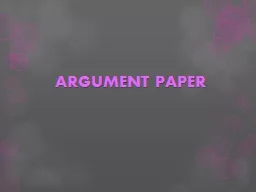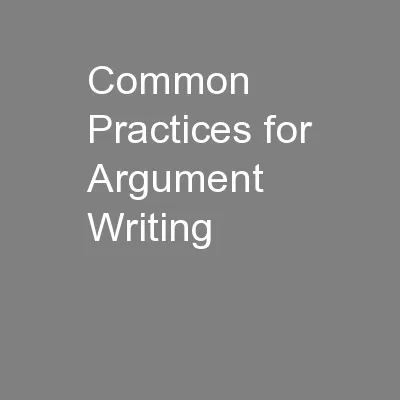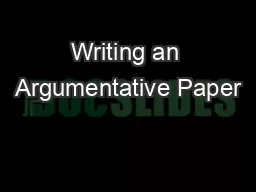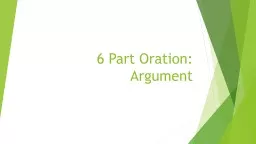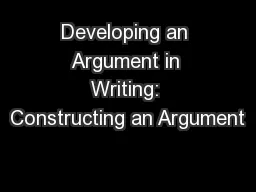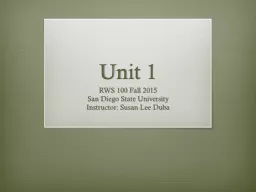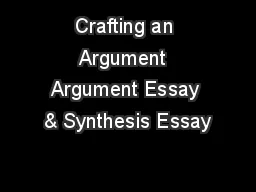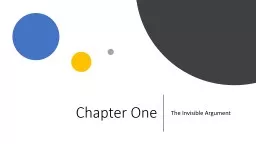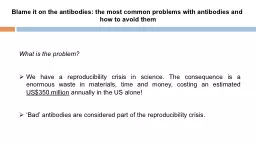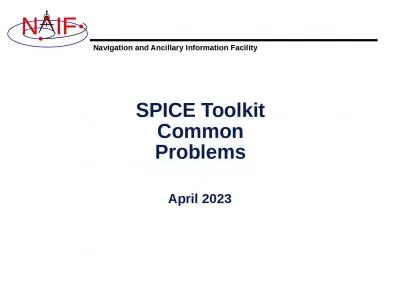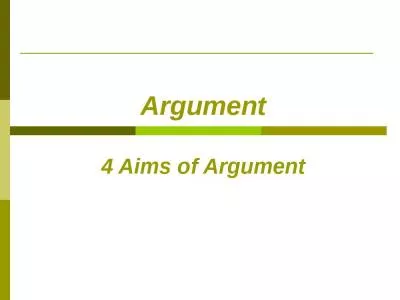PPT-ARGUMENT PAPER Common Problems
Author : test | Published Date : 2020-04-05
taken from AP CENTRAL Problems that prevented students from earning a high score on Question Three included Not taking a clear position or wavering between positions
Presentation Embed Code
Download Presentation
Download Presentation The PPT/PDF document " ARGUMENT PAPER Common Problems " is the property of its rightful owner. Permission is granted to download and print the materials on this website for personal, non-commercial use only, and to display it on your personal computer provided you do not modify the materials and that you retain all copyright notices contained in the materials. By downloading content from our website, you accept the terms of this agreement.
ARGUMENT PAPER Common Problems : Transcript
Download Rules Of Document
" ARGUMENT PAPER Common Problems "The content belongs to its owner. You may download and print it for personal use, without modification, and keep all copyright notices. By downloading, you agree to these terms.
Related Documents

